Martin David Crowe MBE (22 September 1962 – 3 March 2016) 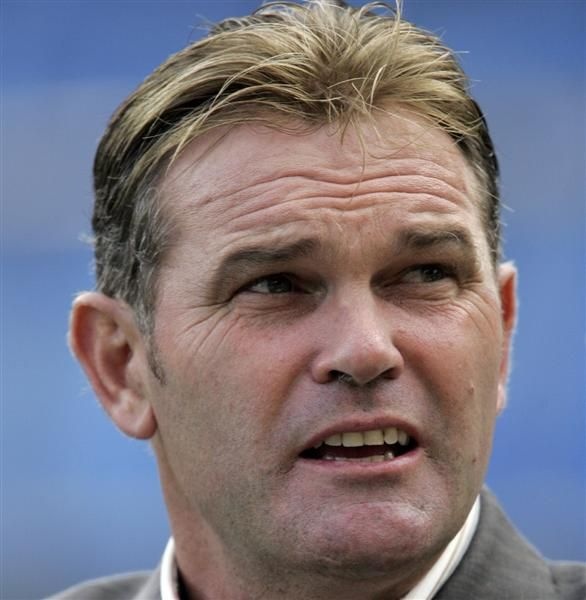 was a New Zealand cricket player and commentator. He played for the New Zealand national cricket team between 1982 and 1995, and is regarded as the country's greatest batsman.[1]
was a New Zealand cricket player and commentator. He played for the New Zealand national cricket team between 1982 and 1995, and is regarded as the country's greatest batsman.[1]
Crowe made his first-class debut for Auckland at the age of 17, and hisTest debut for New Zealand at the age of 19. He was named a Wisden Cricketer of the Year in 1985, and was credited as one of the "best young batsmen in the world".[2] Crowe was appointed New Zealand'scaptain in 1990, and led the team until 1993. In a Test against Sri Lankain 1991, he scored 299 runs, breaking the record for the highest score by a New Zealander. In the same match, he also set a new record for the highest partnership in Test cricket, putting on 467 runs with Andrew Jones. At the 1992 World Cup, which New Zealand co-hosted with Australia, Crowe was named the player of the tournament, and led his team to a semi-final. By the time he finished his international career in 1995, he held the records for the most Test and One Day International(ODI) runs scored for New Zealand.
After retiring from playing, Crowe remained involved in cricket as a writer and commentator. He was diagnosed with lymphoma in 2012, but was declared cancer-free the following year. However, the disease returned in 2014, and eventually led to his death in 2016. Early life
Crowe was born in Henderson, a suburb of Auckland, to a family of cricketers.[3] His father, Dave Crowe, played first-class cricket for Canterbury and Wellington[4] and his older brother, Jeff Crowe, played Test cricket.[5] One of the brothers' first cousins is actor Russell Crowe.[6] In 1968, Martin Crowe joined his father and brother at the Cornwall Cricket Club, with which he maintained a life-long connection.[7][8] At Auckland Grammar School, which he attended from 1976 to 1980, he was deputy head boy in his final year. He captained the school's cricket team, and also played rugby union, as a wing.[7]
Domestic career
Crowe made his first-class debut in January 1980, playing for Auckland against Canterbury.[9] Aged 17 at the time, he scored 51 runs in his first innings, which was his team's highest score.[10] In 1981, having been named New Zealand's Young Cricketer of the Year, Crowe was given the opportunity to spend six months on the ground staff of Lord's, simultaneously playing for the Marylebone Cricket Club.[7] Returning to New Zealand for the 1981–82 domestic season, he scored a maiden first-class century, making 150 runs against Canterbury.[11] Crowe switched to Central Districts after the 1982–83 season. His career for Central Districts was limited by his international duties, but in 32 first-class appearances (from 1983 to 1990), he averaged 68.72, with 13 centuries.[12] Crowe's highest score for the team (and in all New Zealand domestic cricket) was 242, made against Otago in January 1990.[13] That season was his last for Central Districts, as he transferred to Wellington prior to the 1990–91 season. In five seasons for Wellington, Crowe would make only nine first-class appearances, the last of which came during the 1994–95 season.[9]
In 1984, Crowe signed to play English county cricket with Somerset.[9] He had great success in his first County Championship season, finishing second behind Vic Marks in Somerset's averages and placing sixth for overall runs scored.[14] However, Crowe did not return to the county until the 1987 season.[15] In that year's County Championship, he placed third in the overall averages (behind teammate Steve Waugh and Northamptonshire's Roger Harper), and also placed third for overall runs scored (behind Graeme Hick and Graeme Fowler).[16] Against Hampshire in the 1987 Benson & Hedges Cup (a limited-overs competition), he scored 155 not out from 119 balls, which was to be the highest one-day score of his career.[17] Crowe returned for a final season at Somerset in 1988, but was able to play only a handful of matches.[9]From 48 matches for Somerset, he finished with a first-class batting average of 59.46.[12]
International career
Early years
Martin Crowe's Test performance graph
Crowe made his international debut for New Zealand in February 1982, in aOne Day International (ODI) game against Australia played at Auckland's Eden Park.[18] He made his Test debut at the end of the month, playing against the same team at Wellington's Basin Reserve.[19] At the time, only six New Zealanders had made their Test debuts at a younger age.[20] At the 1983 World Cup in England, Crowe played in all six of his team's matches, with only Geoff Howarth scoring more runs. His highest score was 97, made in the opening game against England.[21] In January 1984, when England toured, Crowe scored his first Test century – 100 runs exactly.[22]
In 1985, Crowe made two scores of 188. The first came on a mid-year tour of the West Indies, with Crowe at the crease for 462 balls and over nine hours.[23] The second came in an end-of-year tour of Australia, in a match that was better known for Richard Hadlee's 15-wicket haul.[24] In a Test against the West Indies in February 1987, Crowe and John Wright put on 241 runs for the third wicket, setting a new third-wicket record for New Zealand.[25] Later in the year, Crowe played in the1987 World Cup in India. He finished as New Zealand's leading run-scorer, making three half-centuries from six matches, although his team struggled (winning only against Zimbabwe).[26]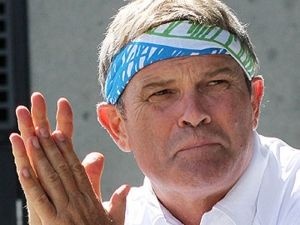
Captaincy and 1992 World Cup
Crowe was first appointed captain of New Zealand for a tour of Pakistan in October and November 1990.[27] Before that point, he had been regarded as "captain designate" to John Wright, who was nearing the end of his international career.[28]Crowe's second series as captain came in early 1991, when Sri Lanka toured. In the first Test of the series, played in Wellington, Crowe scored 299 runs in his team's second innings, setting a new record for the highest score by a New Zealander.[a][b][29] He was at the crease for 523 balls and over ten hours, and scored 29 fours and three sixes.[30] Crowe and Andrew Jones (who scored 186) put on 467 runs for the third wicket, setting a new record for the highest partnership in Test cricket.[c][31] The pair helped New Zealand, behind by 323 runs on the first innings, to score 671/4 at the end of the final day's play, which at the time was the highest score in the third innings of a Test.[32]
At the 1992 World Cup, which New Zealand co-hosted with Australia, Crowe finished as the tournament's leading run-scorer, and was eventually named player of the tournament. One of his highlights was an innings of 100 not out in the opening match against Australia, which New Zealand won by 37 runs.[33] In the tournament's group stages, New Zealand lost only a single game, against Pakistan. They topped the table, qualifying for a home semi-final against the same team (their first finals appearance since the 1979 tournament). Crowe chose to bat first, and scored 91 runs from 83 balls to help his team to a total of 262/7. However, when Pakistan batted, he chose to stay off the field and rest an injured hamstring, with John Wright taking over on the field. Pakistan eventually won the match by four wickets.[34] Crowe largely blamed himself for his team's loss, and in a 2014 article said that his decision not to take the field was "a curse that had tormented me for over two decades".[35]
Crowe's last series as captain of New Zealand came when Australia toured in February and March 1993. He had struggled with injuries for several years, and was replaced by Ken Rutherford to allow him to concentrate on his form. However, he returned as captain for one final match in November 1993, the first game of a series against Australia.[19] In total, Crowe captained New Zealand in sixteen Tests, winning only two.[27] He had a much better record in ODIs, with the team winning 21 out of 44 matches under his captaincy.[36] Crowe was described by broadcaster Bryan Waddle as a "proactive rather than reactive" leader, who was "always prepared to be innovative".[37] He had a troubled relationship with the media throughout his captaincy, in one case using a press conference to confront a journalist who had published an article implying he had AIDS.[38]
Later years
In his first series after giving up the captaincy, a 1994 tour of England, Crowe scored back-to-back centuries, making 142 atLord's and 115 at Old Trafford.[19] His series tally of 380 runs was the second-highest of his career.[39] Crowe continued playing for several more seasons, eventually retiring after a tour of India in October and November 1995.[19] He scored his final international hundred in the first ODI of the tour, aged 33.[40] Crowe finished with 5,444 Test runs and 4,704 ODI runs, both New Zealand records at the time.[41][42] At the time of his retirement, only Sir Richard Hadlee had played more Tests for New Zealand.[43] Crowe continues to hold the record for the most Test centuries by a New Zealander, finishing with seventeen (including one against every Test-playing team but South Africa).[44]
In the 1992 New Year Honours, Crowe was made a Member of the Order of the British Empire, for services to cricket.[45] On 28 February 2015, Crowe was inducted into the ICC Cricket Hall of Fame. He was inducted in a ceremony during the lunch break of New Zealand's win against Australia during the 2015 World Cup.[46] 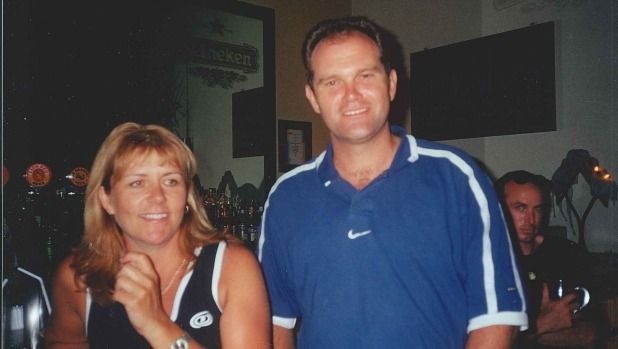
Later life
Coaching
After his retirement, Crowe helped develop a local variation of cricket, called "Cricket Max",[47] and became a television commentator and pundit. He was a board member of the South Sydney Rabbitohs Rugby League Football Club of whichRussell Crowe is part owner. He was roped in as the CEO of the management team of Royal Challengers Bangalore, a team in the Indian Premier League. Midway through the season the owner Vijay Mallya expressed displeasure over the team and its performance in the league by sacking its bowling coach Venkatesh Prasad and mentor Charu Sharma blaming them for dismal team performance. Later in October of the same year, Crowe parted ways with the team and brought inRay Jennings, the former coach of the South African National Cricket Team as the head coach of the team. Sources suggested that Mallya was unhappy with the team he had and held Crowe and his management team responsible for the debacle.[48] He has also mentored current New Zealand batsmen, Martin Guptill, Ross Taylor and Kane Williamson.
Attempted comeback
Crowe batting in a charity game in 2011
On 19 May 2011, Crowe commented on Twitter that he wanted to improve his fitness by setting a goal to play first-class cricket again. He cited that he was only 3 first-class matches away from 250 matches, and 392 runs short of 20,000 runs.[49]
Crowe took his first step to playing first-class cricket by playing at club level at the age of 49 (he was due to debut much earlier, but was delayed due to a groin injury). He played for the Cornwall reserve grade team, captaining them and batting at No.3 against Papatoetoe in a second-division club match in Auckland,[50] the same club where his father played grade cricket.[51]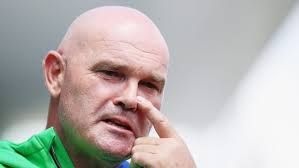
Illness and death
On 15 October 2012, it was revealed that Crowe had been diagnosed withlymphoma.[52] He blamed the illness on a failing immune system, weakened by various illnesses picked up while touring the world in the 1980s and 1990s.
On 5 June 2013, Crowe announced that he was free of cancer on Campbell Live, but he would cut his ties with cricket, as he was a self-proclaimed "recovering addict to cricket, much like an alcoholic".[53] Crowe says he wore a 'mask' from the age of 22, due to high expectations, but at the age of 51 was happy to 'look at the real me'.[54]
In 2014, Crowe announced that the lymphoma had returned and subsequently indicated that his chances of survival beyond 12 months were less than 5% and also of his wish to see the 2015 Cricket World Cup[55] in February and March 2015.[56] Crowe died of complications from the disease in Auckland on 3 March 2016.[57] His funeral was held in Holy Trinity Cathedral in a Christian ceremony in Parnell, Auckland.[58]
Personal life
In 1991, Crowe married Simone Curtice, an interior designer. They separated five years later, in 1996, and Crowe later entered into a relationship with Suzanne Taylor, with whom he had one daughter.[59] He and Taylor separated in 2005.[60] In 2009, Crowe married for a second time, to Lorraine Downes, a former Miss Universe. They remained married until his death.[61].
Playing style
Upon his death, Crowe was eulogised in The Guardian as "not just one of New Zealand’s greatest ever cricketers, but one of the most elegant batsmen the world has yet seen".[62] A 2012 article by Mark Nicholas described him as "upright, orthodox and immensely strong" at the wicket, and praised the "speed and grace of the footwork" and "perfect head position". Nicholas thought the elegance of Crowe's batting was at odds with his physical size – he was "a big man in a small man's game".[63] Writing in his retirement, Crowe emphasised the importance of instinct in batting, and the need to avoid premeditating a shot.[64].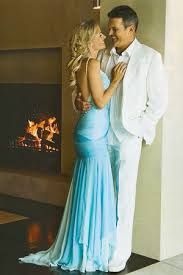
During his early career, Crowe was also often used as a "bits and pieces bowler", with his "lively in-swingers" faring especially well in English conditions.[65] He was regarded as an "outstanding" fieldsman,[66] and against Zimbabwe in the1987 World Cup dismissed David Houghton with an outstretched diving catch that was said to have won New Zealand the game.[67] As a captain, Crowe was known for his use of innovative techniques, most notably opening the bowling with a spinner, Dipak Patel, at the 1992 World Cup. He often had highly developed bowling and fielding plans, regularly rotating his bowlers and changing his fields to put pressure on opposing batsmen.[68] Former Pakistan captain Rameez Raja described Crowe as "an imaginative leader who maximised his team's potential and resources by thoughtful captaincy and out-of-the-box tactics".[69] Statistics
In the column Runs, * indicates being not out.
The column title Match refers to the Match Number of his career.
Test centuries
Martin Crowe's Test centuries[70]
No. Runs Match Against City/Country Venue Year Result
1 100 8 England New Zealand Wellington, New Zealand Basin Reserve 1984 Drawn
2 188 21 West Indies West Indies Cricket Board Georgetown, Guyana Bourda 1985 Drawn
3 188 24 Australia Australia Brisbane, Australia The Gabba 1985 Won
4 137 28 Australia New Zealand Christchurch, New Zealand Lancaster Park 1986 Drawn
5 106 30 England England London, England Lord's 1986 Drawn
6 119 33 West Indies New Zealand Wellington, New Zealand Basin Reserve 1987 Drawn
7 104 34 West Indies New Zealand Auckland, New Zealand Eden Park 1987 Lost
8 137 38 Australia Australia Adelaide, Australia Adelaide Oval 1987 Drawn
9 143 39 England New Zealand Wellington, New Zealand Basin Reserve 1988 Drawn
10 174 40 Pakistan New Zealand Wellington, New Zealand Basin Reserve 1989 Drawn
11 113 45 India New Zealand Auckland, New Zealand Eden Park 1990 Drawn
12 108* 50 Pakistan Pakistan Lahore, Pakistan Gaddafi Stadium 1990 Lost
13 299 52 Sri Lanka New Zealand Wellington, New Zealand Basin Reserve 1991 Drawn
14 140 58 Zimbabwe Zimbabwe Harare, Zimbabwe Harare Sports Club 1992 Won
15 107 60 Sri Lanka Sri Lanka Colombo, Sri Lanka Sinhalese Sports Club 1992 Lost
16 142 66 England England London, England Lord's 1994 Drawn
17 115 67 England England Manchester, England Old Trafford 1994 Drawn
One Day International centuries
Martin Crowe's One Day International centuries[70]
No. Runs Match Against City/Country Venue Year Result
1 105* 15 England New Zealand Auckland, New Zealand Eden Park 1984 Won
2 104 83 India New Zealand Dunedin, New Zealand Carisbrook 1990 Won
3 100* 114 Australia New Zealand Auckland, New Zealand Eden Park 1992 Won
4 107* 140 India India Jamshedpur, India Keenan Stadium 1995 Won Notes]
Jump up ^ Crowe was only the second player to score 299 in a Test, after Don Bradman, who scored 299 not out for Australia against South Africa in 1932.
Jump up ^ Crowe's New Zealand record was broken in February 2014, when Brendan McCullum scored 302 against India.
Jump up ^ Crowe and Jones's overall record was broken in August 1997, when Sanath Jayasuriya and Roshan Mahanama put on 576 runs for Sri Lanka against India. Their third-wicket record was broken in July 2006, when Kumar Sangakkara and Mahela Jayawardene put on 624 runs for Sri Lanka against South Africa (also setting a new overall record).
References
Jump up ^ References[edit]
Jump up ^ Stephen Hewson (3 March 2016). "Martin Crowe: NZ's greatest batsman" – Radio New Zealand. Retrieved 3 March 2016.
Jump up ^ "Player Profile: Martin Crowe". ESPNcricinfo. Retrieved 3 March 2016.
Jump up ^ "Martin Crowe". CricketArchive. Retrieved 3 March 2016.
Jump up ^ "Dave Crowe". CricketArchive. Retrieved 3 March 2016.
Jump up ^ "Jeff Crowe". CricketArchive. Retrieved 3 March 2016.
Jump up ^ "Cancer-hit Martin Crowe lauds cousin Russell Crowe's 'greatest victory'". TV New Zealand. Retrieved 3 March 2016.
^ Jump up to: a b c "How a young Martin Crowe caught the Herald's eye". New Zealand Herald. 3 March 2016. Retrieved 3 March 2016.
Jump up ^ "Cricketing youth honour Martin Crowe". www.newshub.co.nz. Retrieved 2016-03-04.
^ Jump up to: a b c d "First-class matches played by Martin Crowe". CricketArchive. Retrieved 3 March 2016.
Jump up ^ "Auckland v Canterbur, Shell Trophy 1979/80". CricketArchive. Retrieved 3 March 2016.
Jump up ^ "Central Districts v Auckland, Shell Trophy 1981/82". CricketArchive. Retrieved 3 March 2016.
^ Jump up to: a b "First-class batting and fielding for each team by Martin Crowe". CricketArchive. Retrieved 3 March 2016.
Jump up ^ "Central Districts v Otago, Shell Trophy 1989/90". CricketArchive. 3 March 2016.
Jump up ^ "Batting and fielding in Britannic Assurance County Championship 1984 (ordered by runs)". CricketArchive. 3 March 2016.
Jump up ^ "Teams Martin Crowe played for". CricketArchive. Retrieved 3 March 2016.
Jump up ^ "Batting and fielding in Britannic Assurance County Championship 1987 (ordered by runs)]". CricketArchive. 3 March 2016.
Jump up ^ "Hampshire v Somerset, Benson and Hedges Cup 1987 (Group C)". CricketArchive. 3 March 2016.
Jump up ^ ODI matches played by Martin Crowe – CricketArchive. Retrieved 3 March 2016.
^ Jump up to: a b c d ODI matches played by Martin Crowe – CricketArchive. Retrieved 3 March 2016.
Jump up ^ Youngest players on debut for New Zealand in Test matches – CricketArchive. Retrieved 3 March 2016.
Jump up ^ Batting and fielding for New Zealand, Prudential World Cup 1983 – CricketArchive. Retrieved 3 March 2016.
Jump up ^ New Zealand v England, England in New Zealand and Pakistan 1983/84 (1st Test) – CricketArchive. Retrieved 3 March 2016.
Jump up ^ West Indies v New Zealand, New Zealand in West Indies 1984/85 (2nd Test) – CricketArchive. Retrieved 3 March 2016.
Jump up ^ Australia v New Zealand, New Zealand in Australia 1985/86 (1st Test) – CricketArchive. Retrieved 3 March 2016.
Jump up ^ Records / New Zealand / Test matches / Highest partnerships by runs – ESPNcricinfo. Retrieved 3 March 2016.
Jump up ^ Batting and fielding for New Zealand, Reliance World Cup 1987/88 – CricketArchive. Retrieved 3 March 2016.
^ Jump up to: a b Records / New Zealand / Test matches / List of captains – ESPNcricinfo. Retrieved 3 March 2016.
Jump up ^ Gideon Haigh (3 March 2016). "Martin the invincible" – ESPNcricinfo. Retrieved 3 March 2016.
Jump up ^ Records / New Zealand / Test matches / High scores – ESPNcricinfo. Retrieved 3 March 2016.
Jump up ^ New Zealand v Sri Lanka, Sri Lanka in New Zealand 1990/91 (1st Test) - CricketArchive. Retrieved 3 March 2016.
Jump up ^ Records / Test matches / Partnership records / Highest partnerships for any wicket – ESPNcricinfo. Retrieved 3 March 2016.
Jump up ^ Records / Test matches / Team records / Highest innings totals – ESPNcricinfo. Retrieved 3 March 2016.
Jump up ^ Benson & Hedges World Cup, 1st Match: New Zealand v Australia at Auckland, Feb 22, 1992 – ESPNcricinfo. Retrieved 3 March 2016.
Jump up ^ Nagraj Gollapudi (15 January 2015). "Crowe's fatal gamble" – ESPNcricinfo. Retrieved 3 March 2016.
Jump up ^ Martin Crowe (18 February 2014). "How McCullum helped me let go" – ESPNcricinfo. Retrieved 3 March 2016. External links[edit]
Wikimedia Commons has media related to Martin Crowe.
Official website
Player profile: Martin Crowe from CricketArchive
Player profile: Martin Crowe from ESPNcricinfo



